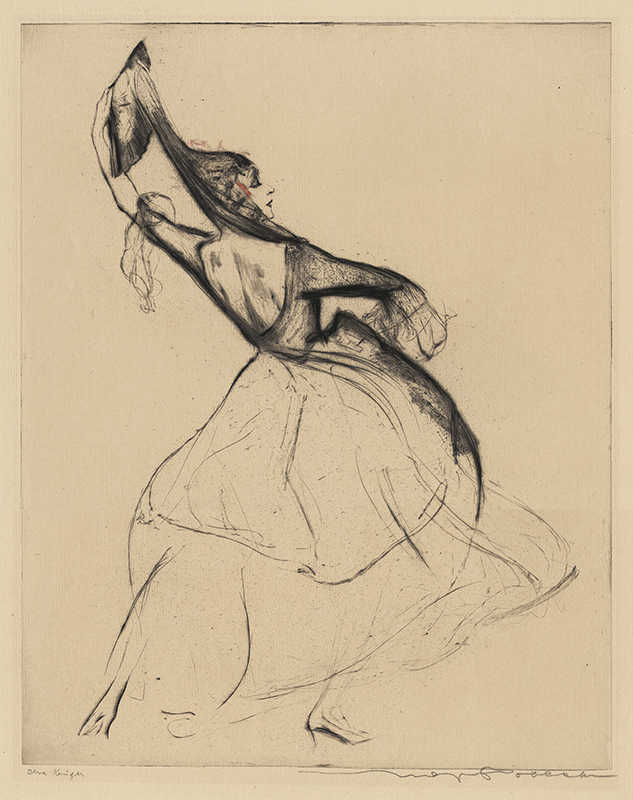
19th, 20th & 21st Century Fine Prints
707-546-7352 · fax 707-546-7924 · web: www.annexgalleries.com · email: artannex@aol.com
Dancers: Elsa Krueger by Max Pollak

Dancers: Elsa Krueger
Max Pollak
Dancers: Elsa Krueger
Max Pollak
1886 - 1970 (biography)While in Europe Pollak did many portraits; artists, intellectuals, musicians, family, ordinary citizens, and a series of large drypoints of many of the dancers of the time.
Elsa Krüger (Krueger) was born circa 1893 in the Russian empire, her father was of Dutch origin, and her mother was Russian. Elsa studied at a ballet school and about 1913 started to perform at one of Moscow theatres in "modern" dances. Soon she became a local star and was given the nickname "queen of tango".
Krueger became a friend of painter Alexandra Exter and an actress who starred in one of the best movies of the Russian empire – "Silent Witnesses" directed by Yevgeny Bauer (1914). In "Silent Witnesses" Elsa splendidly played an aristocratic young woman who's in love with one man, but he cannot marry her, and she must marry another man whom she doesn't love (and who is loved by a little maid, her rival). The director Bauer wanted to make a silent movie without any captions, but at private views, the audience didn't like the innovation, and some captions were added.
In this movie, Elsa is wearing beautiful costumes (possibly designed by Nadezhda Lamanova, one of the best Russian designers). After the revolution of 1917, she left Moskow and moved to Odessa, later (in 1920) to Berlin. Her relationship with a very rich businessman helped her to open Russian Romantic Ballet Theatre in Berlin ("Russische romantische Ballet"). Painter Alexandra Exter designed costumes for her and her dancers and also decorated her Berlin home.
Alexandra Exter died in 1949 in misery, so it's possible that Elsa Krüger didn't survive the war. She reportedly died in 1941 in Germany.
Excerpted from the blog "Verbinina": https://verbinina.wordpress.com/2014/01/10/elsa-kruger/
